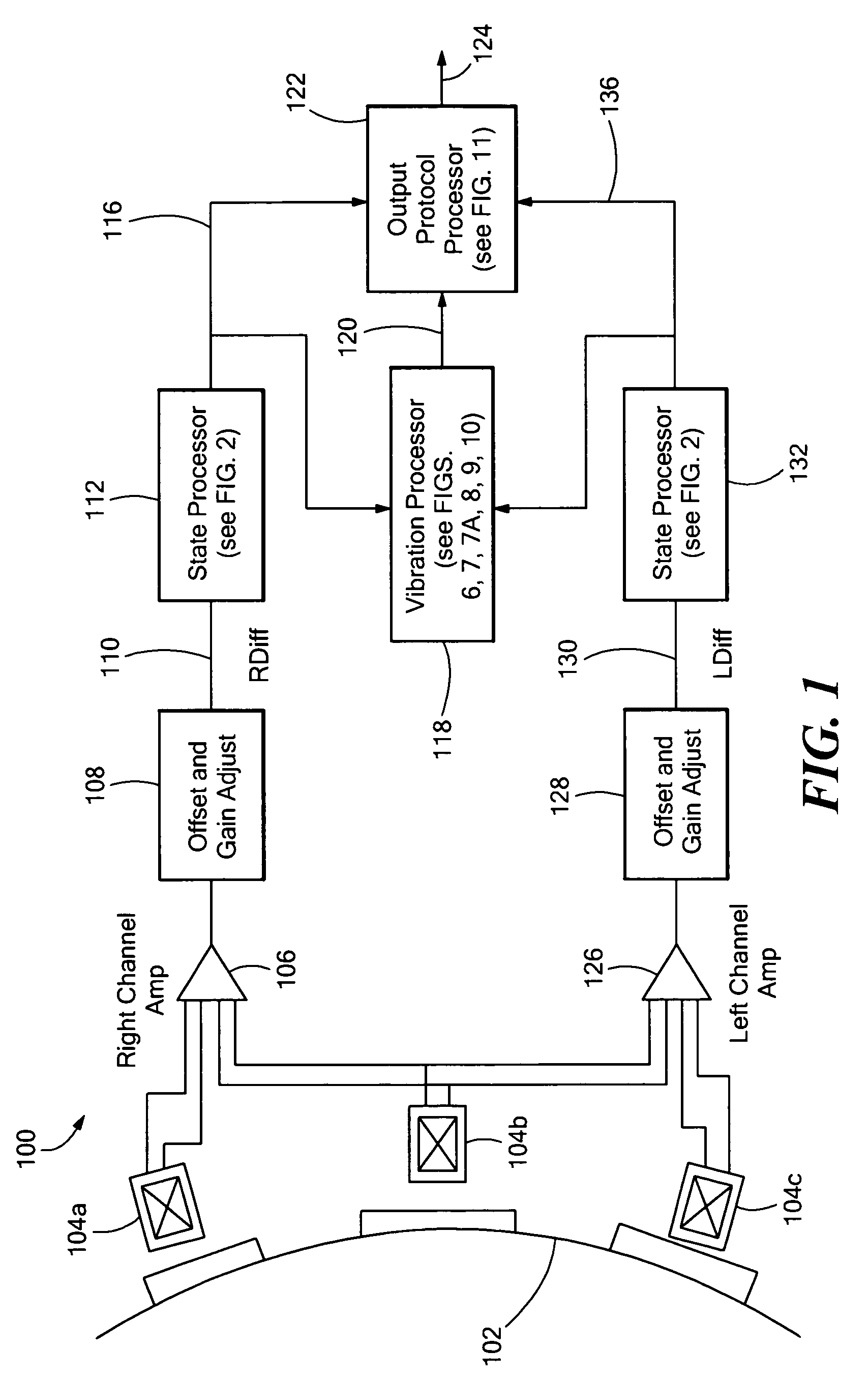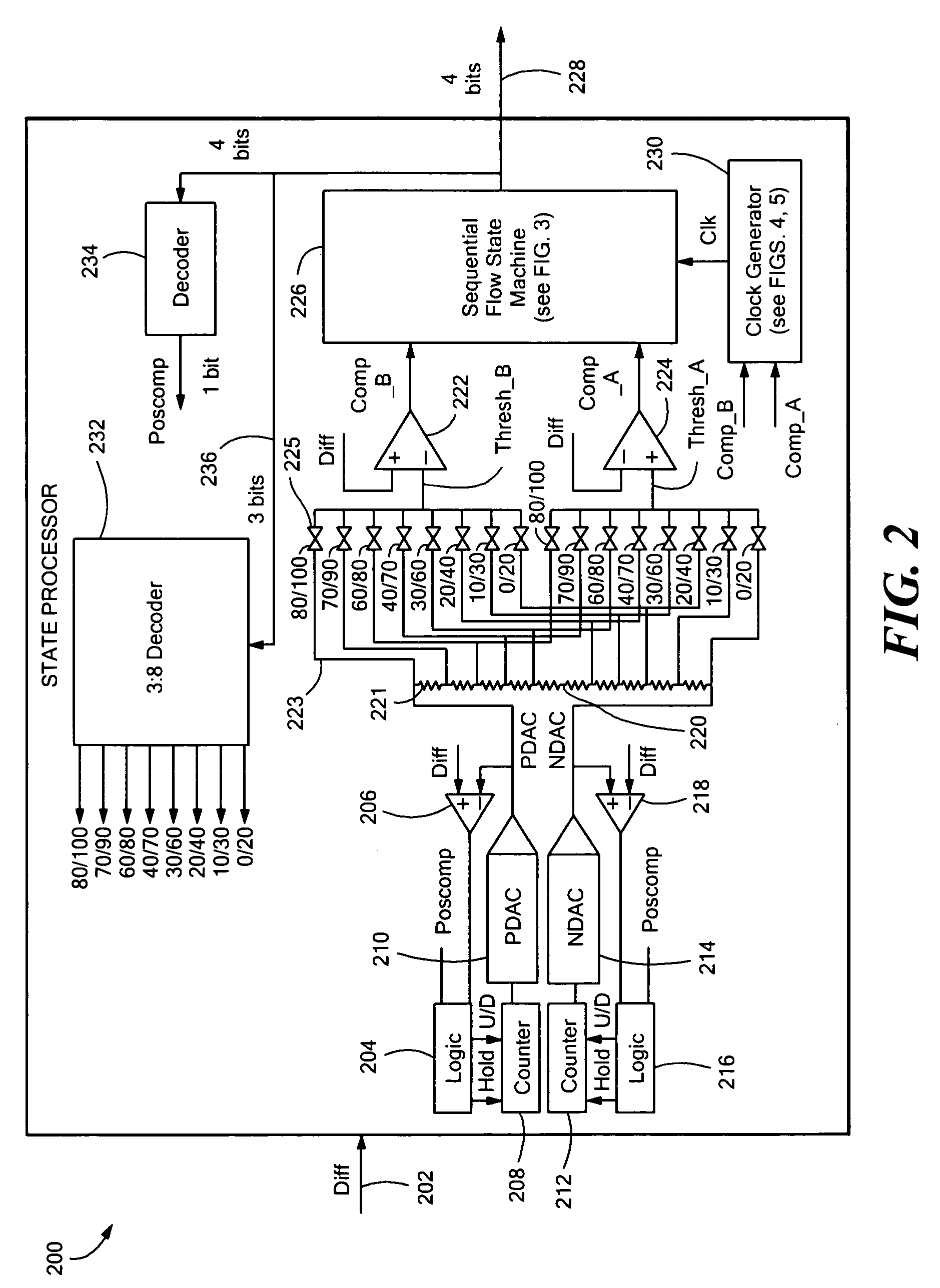Proximity detector having a sequential flow state machine
a flow state machine and proximity detector technology, applied in the field of proximity detectors, can solve the problems of affecting the operation of the system, proximity detectors primarily tend to experience rotational vibration, and adverse to system operation
- Summary
- Abstract
- Description
- Claims
- Application Information
AI Technical Summary
Benefits of technology
Problems solved by technology
Method used
Image
Examples
Embodiment Construction
[0033]Before describing the present invention, some introductory concepts and terminology are explained. As used herein, the term “rotational vibration” refers to a back and forth rotation of an object about an axis of rotation, which object is adapted to rotate in a unidirectional manner about the axis of rotation in normal operation. As used herein, the term “translational vibration” refers to translation of the object and / or of magnetic field sensors used to detect magnetic fields generated by the object generally in a direction perpendicular to the axis of rotation. It should be recognized that both rotational vibration and translational vibration can cause signals to be generated by the magnetic field sensors.
[0034]Referring to FIG. 1, an exemplary proximity detector system 100, includes three magnetic field sensing elements 104a-104c, each adapted to generate a respective magnetic-field-sensing-element signal in response to passing teeth of a rotating gear 102. The system 100 ...
PUM
 Login to View More
Login to View More Abstract
Description
Claims
Application Information
 Login to View More
Login to View More - R&D
- Intellectual Property
- Life Sciences
- Materials
- Tech Scout
- Unparalleled Data Quality
- Higher Quality Content
- 60% Fewer Hallucinations
Browse by: Latest US Patents, China's latest patents, Technical Efficacy Thesaurus, Application Domain, Technology Topic, Popular Technical Reports.
© 2025 PatSnap. All rights reserved.Legal|Privacy policy|Modern Slavery Act Transparency Statement|Sitemap|About US| Contact US: help@patsnap.com



